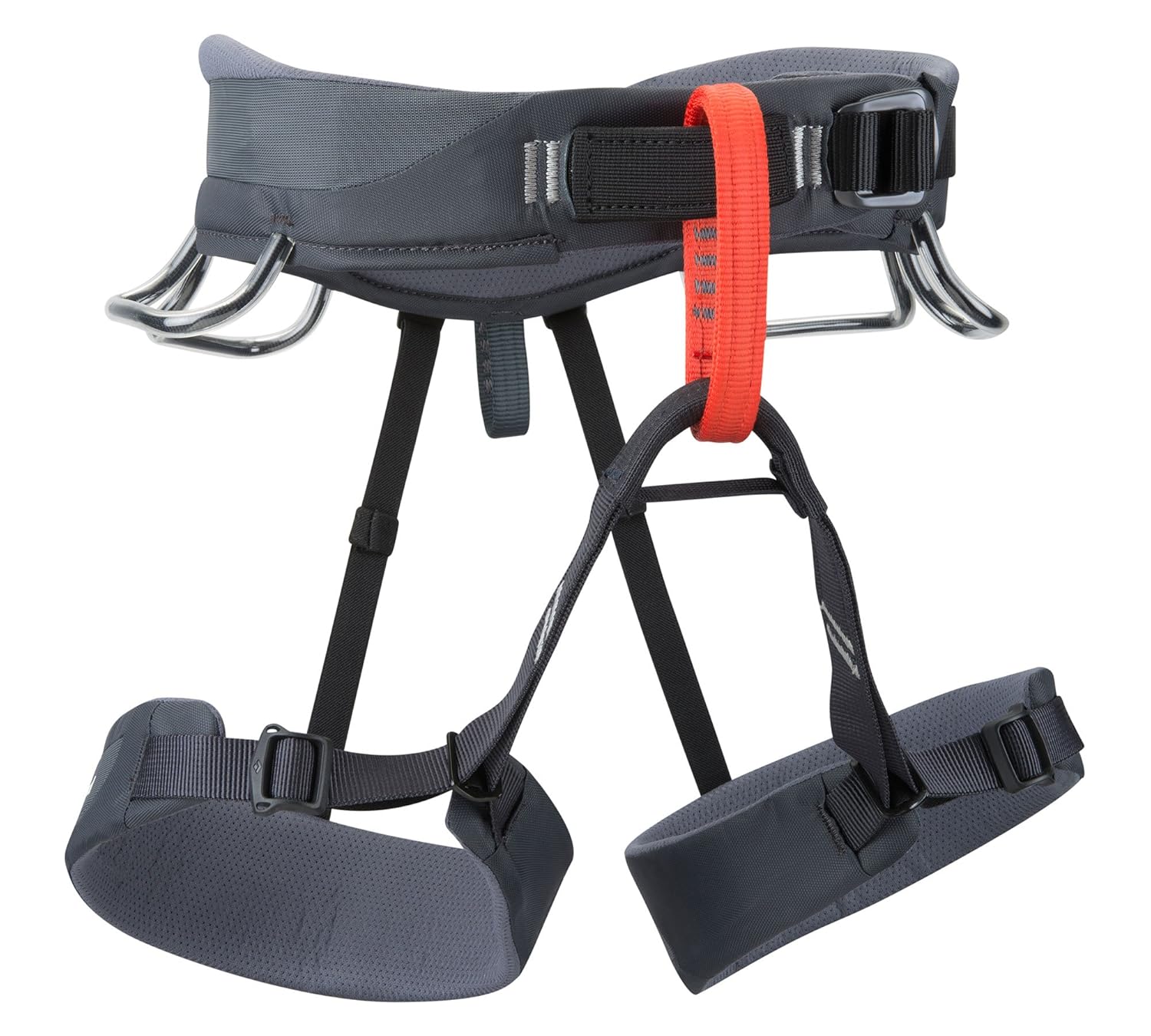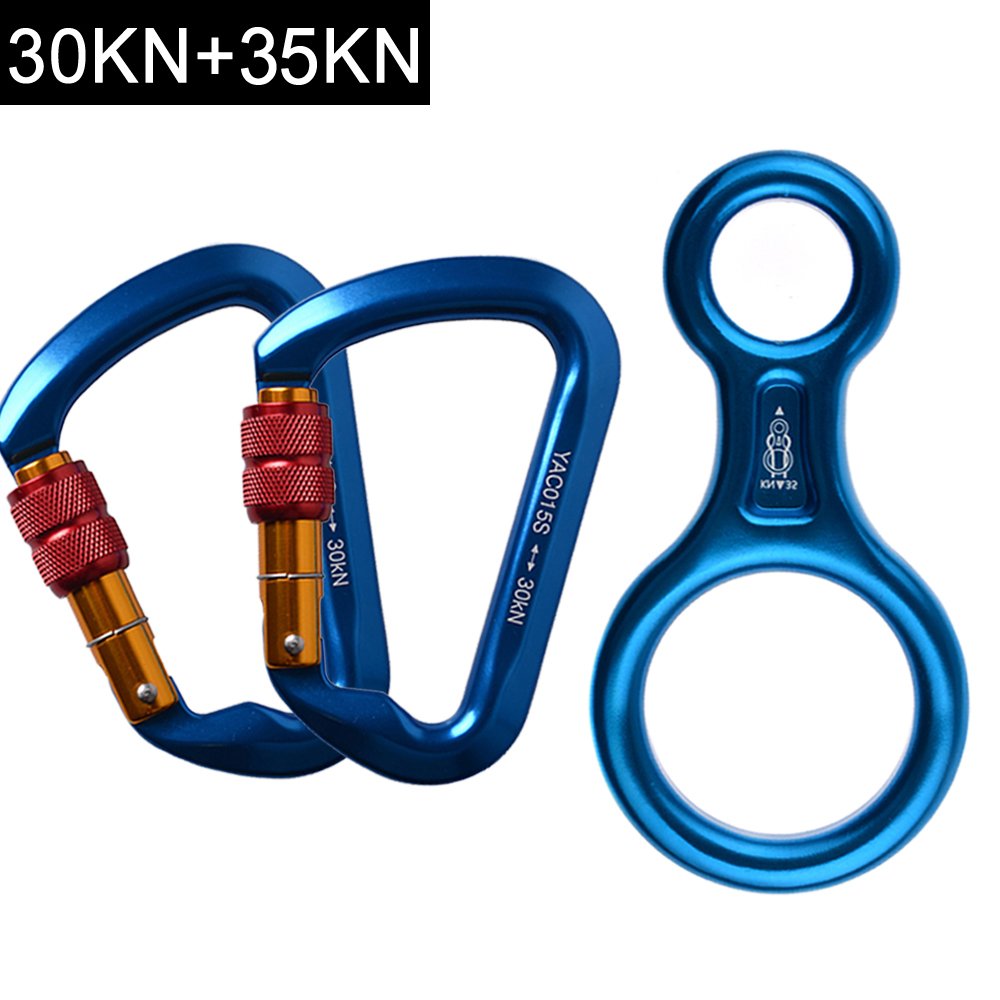Would you list basic rappelling gear? how many sets are needed for a family? i stay on the first or second floor of hotels, and keep a flashlight in case the electricity fails. you never know! i keep water and protein bars and toilet paper in the car. anything else you recommend? these are silly questions to people with common sense but i have none and would appreciate some advice. many thanks to you.
I’m by no means an expert on rappelling (and those that are please comment below). I have done it a few times though, enough to know it’s easy enough and you can learn the basic technique in one session.
You’re basically looking at four items you need, at the very least: a climbing rope, harness, carabiner and figure 8 descender. How advanced each item is and how much extra equipment you add is up to you. A helmet for example, would be considered essential safety equipment for climbing.
The good news is that if you want a basic kit, rope, harness, figure 8 and carabiner, you can have a basic emergency set for relatively little money. A harness can cost as little as 29 bucks in Amazon, a rope can go for a little over twenty. This is the cheapest stuff around but it sure beats tying a few bed sheets in a borderline suicidal attempt to escape burning to death. Even this basic kit can make all the difference between life and death.
For those living long term in high-rise buildings I would suggest spending a bit more and buying brand name such as Petzl or Black Diamond, which goes for a bit more money but you can use with confidence, even use once or twice a year in a safe location to properly practice rappelling. For rope, get proper 'dynamic' climbing rope.

Petzl Volta 9.2mm Rope $129.95
FerFAL
Fernando “FerFAL” Aguirre is the author of “The Modern Survival Manual: Surviving the Economic Collapse” and “Bugging Out and Relocating: When Staying is not an Option”










10 comments:
Based on the description on the Petzl site (https://www.petzl.com/US/en/Sport/Ropes/VOLTA-9-2-mm#.WUxQQLFOmfA) it looks like that's a dynamic rope. For rappelling what you want is a static rope. Dynamic ropes are intended for protection while climbing. They're designed to stretch, so if you fall while climbing you don't get hurt by the sudden stop when the rope goes taut. When rappelling, that means that they're rather "bouncy". When you get to the end of a long rappel the rope will act like a bungee cord and you'll bounce up and down a couple of feet every time you descend a bit. It can be done, but if you're buying a rope just for rappelling it makes more sense to get a static rope (which does not stretch very much).
This would be minimally practical for a apartment building fire scenario. Flames shoot out of nearly every window hole in an apartment fire, like in London. It would melt that rope in seconds. A steel cable would be necessary.
Fernando,
I would avoid generic "rope" for lifesaving purposes; you have zero objective ability to determine strength and construction.
Also, you want "static" line for rappelling, not dynamic.
Here is a good resource, and their products are best quality. I used them for decades in a professional capacity.
http://www.cmcrescue.com/
Rappelling is quite easy but I have some points to add:
- if the only thing you want to do is rappelling, a strong static rope is enough, a dynamic one is for cushioning falls, and that is not supposed to happen while rappelling.
- rappelling is done alone. You could probably hold a small child in emergency, but every family member should have his/here own gear and training.
- rappelling is super easy, but it's also an easy way to kill yourself. Many beginners simply let the rope go when they get distracted. That's why it is important to use a safety line with a prusik knot on it until rappelling is a second nature to you.
I don't know much about rappelling or rope, but I would want my rope to be at least heat resistant. If the fire is above me, I could probably just use the stairs. If the fire is below me, flames may be coming out of the windows and melt the rope as I am rappelling down leading to an untimely dirt nap.
Fire and poly rope don't mix. Flames were jetting out of that building's window holes. Need a steel cable system at the least.
I would be concerned about the fire burning through the rope. Being a former Paratrooper, can you guess what equipment I would have in my high rise apartment?
Most (not all) climbers don't bother with helmets, and choose a static rope, rather than a dynamic rope for rappelling. Figure8 descenders are still used by some, but you can use carabiners instead.
The London fire was unusual in that the flames were engulfing the outside of the building, so in this case a rope may not have helped.
Much like a lifeboat, these kits should be required by building code. Oh and don't forget to tie the harness back on when you get to the bottom, someone one else may appreciate it. Steve in KY
Folks, I understand rapelling from a flaming buildling is far from ideal, and yes the rope can burn, but then again you need to watch more videos of what happened. Some people ended up using bed sheets to climb down. Im pretty sure an actual rope would have been even better (and safer) than tying a few bed sheets together.
FerFAL
Post a Comment